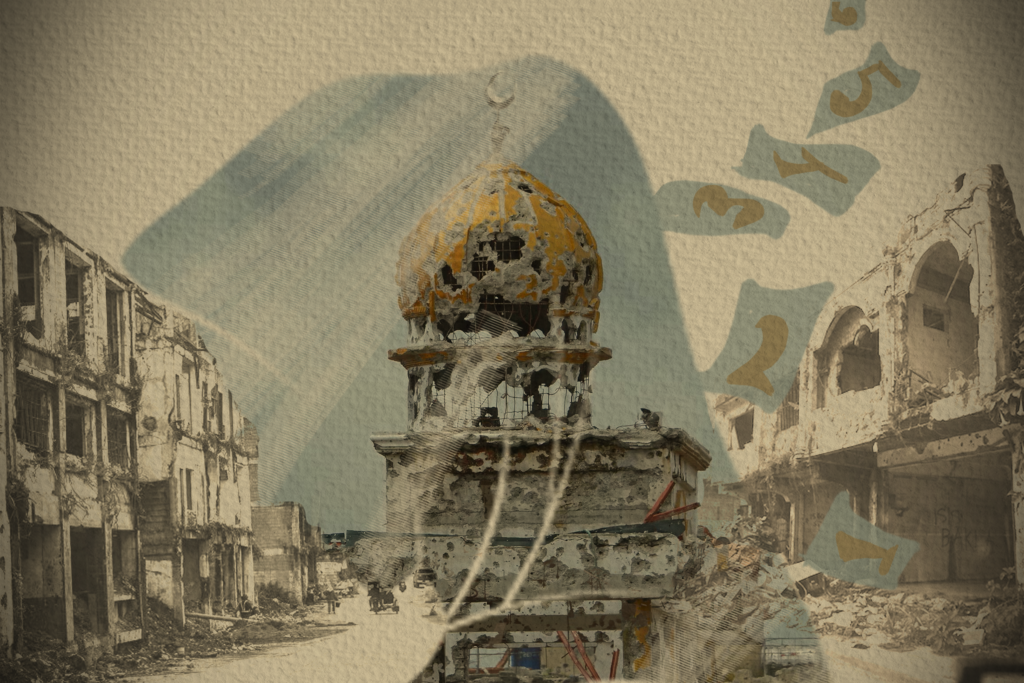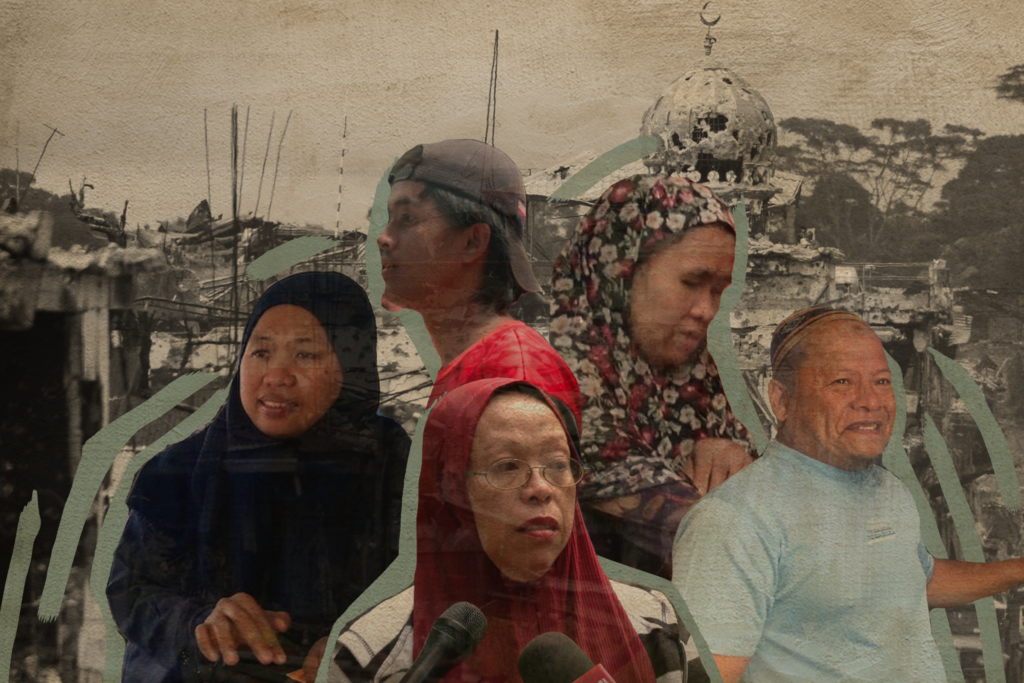Commemoration of sixth year of Marawi gets scant attention
This Week in Media (May 22 to 27, 2023)

THE QUIET lakeside city of Marawi in Lanao del Sur became known to the larger Filipino population for an unfortunate reason: On May 23, 2017, fighting broke out between the military and the ISIS-aligned Maute terror group, forcing civilians to flee their homes and livelihoods. Military airstrikes and counterattacks from the terrorists leveled the city, reducing significant landmarks and residential homes to rubble.
National media was quick to cover the conflict, at the time largely depending on military briefings. The military’s dominance over the flow of information meant there was a lack of coverage of the Marawi siege as a human rights issue. In a CMFR forum, journalists themselves admitted that they fell short in producing stories from the lens of affected individuals and civil society groups who had more knowledge about Marawi and Maranaos.
Two Dates
Since then, the press marked two dates for yearly coverage: the date the siege started, and the date that then President Duterte declared the “liberation” of the city from the Maute group — October 17, 2017.
With the fighting over, reporters naturally followed the rehabilitation efforts for the city, noting delays as necessary and the prolonged agony of Marawi residents. But national media’s interest in revisiting the site and checking progress on rebuilding continues to dwindle. CMFR noted than in October 2022, only Jeff Canoy of ABS-CBN returned to report from Marawi grounds, checking the plight of displaced residents who still live in temporary shelters as well as the delay in the appointment of members of the Marawi Compensation Board (MCB), an agency established by the Duterte administration to assess and provide for reparation and compensation for civilian losses, including life and property. President Ferdinand Marcos, Jr. has since inherited the responsibility for making the appointments.
Different Track
On the commemoration of the sixth year of the siege, reports in Manila-based print and online outfits mostly picked up the MCB’s signing of the implementing rules and regulations (IRR) of the Marawi Siege Victims Compensation Act of 2022 in a ceremony in the city’s Rizal Park. Pursuing up a different track, Manila Standard carried updates from government officials concerning security improvement and cooperation to ensure that a siege won’t happen again.
For broadcast, ABS-CBN’s TV Patrol and GMA-7’s Unang Balita both carried features on fallen police and soldiers of the Marawi siege, and the families they left behind. CNN Philippines’ News Night carried the IRR signing, while TV5 had no report for the sixth commemoration year.
Transitional Justice
Only The Manila Times and Daily Tribune picked up statements from civil society organizations and networks of survivors and displaced residents, who all called for transitional justice. The groups’ call includes not only a dignified return to their homes but also the resolution of land disputes and dispossession. They also called for an accounting of the expenses for rehabilitation since 2017.
Media themselves can take the lead in pursuing these unresolved issues. But this year’s commemoration of the Marawi siege did not elicit much enthusiasm from newsrooms. Some news accounts had already flagged Marcos’ seemingly low priority for Mindanao and peace issues, including the Bangsamoro transition. It would be a shame for the press to show the same lack of urgency and interest.
Voices from Marawi: In recalling the siege, Rappler and MindaNews highlight the Maranao’s struggle for agency

SIX YEARS ago, one of Islam’s sacred places in the country was turned into a place of war, besieged by pro-ISIS militant groups. Nearly 360,000 lost their homes; 1,200 died, 47 of whom were civilians; countless others moved out, never to be heard from again. The story of Marawi is an unfinished story that the media should make real in different ways, for as long as the government fails to restore the city to its people.
What’s the Story?
For six years, the government has failed to implement a plan that could open up the city again and resettle the displaced communities. The media have found it difficult to keep this an urgent and ongoing issue. This year, news accounts were limited to reporting the much-delayed implementing rules and regulations (IRR) of the two government agencies designated to determine the compensation due to people who lost their homes: the Marawi Compensation Board (MCB) and the Marawi Siege Victims Compensation Act.
What Did the Media Do Right
CMFR cheers Rappler and MindaNews for their respective reports that collected personal stories revealing the struggle of persons affected by the conflict, and through their struggle, regained strength and proved their resilience.
On May 19, MindaNews published the story of 48-year-old Isnairah Cayongcat-Casan, written by Jules Benitez. Isnairah was nicknamed “sirena” or mermaid by her mother who said she was always lying down, overwhelmed by the difficulties of life. These days and after the siege, Isnairah describes herself as “superwoman.”
Isnairah remembers how the battle started in their barangay, how the fighting forced her and her two children to stay in their bathroom for 12 hours, recalling their hunger and thirst. She doesn’t forget, she says, the soldier who pointed a gun at them when they were walking to their bedroom at midnight to retrieve jackets because they were cold.
The story continues with how the affect have been trying to rebuild their lives. Isnairah believes the siege and that night of danger made her stronger. She had rebuilt the store which was destroyed in the fighting. She went on to help other women survivors of her village by organizing the Basak Malutlut Women’s Association and training women on conflict resolution and livelihood development.
Rappler’s story, written by Dwight de Leon and posted earlier on March 20, features the “faces of Marawi siege nearly 6 years later.” It tells the stories of Parame Umbra, mother of 14; 22-year-old Yassin Ibrahim; 40-year-old Jamaliah Badi Radi; and 59-year-old Mamarinta Adia. They recount their struggle to survive, living in unfinished shelters. They recall the constant fear, the haunting trauma, and the seemingly endless wait for aid and assistance.
The four people went from day to day, doing what they could do to survive. They sold fruit and drinks, depended on those who shared with them what they had, or offered to fix and repair things. Some say they are doing “fine,” but most of those who received the 2019 cash aid of Php 73,000 expressed that this has already dried out.
The stories and photos open up the lives of these survivors, individuals who even in the face of such loss recall what they miss from their previous lives, the homes made of concrete to house large families, and the neighbors they all knew as friends. These emotions rise from the fear, the hopelessness and the continuing anxiety over the uncertainty they continue to face.
De Leon ends his report: “In Marawi, life has found some semblance of normalcy, years after an urban conflict put the city to a standstill…” But he adds, in other parts of the city, “there are people stuck in the uncertainty of a painful life.”
Why Is this Important?
These impressive reports are a reminder about how, above all policy considerations, the government must remember there are people who lost their lives in the war and who continue to suffer from its consequences. Add to that the neglect, the forgotten promises, the failed schedules to start in earnest the plan to rebuild their lives. De Leon’s words speak the truth: “The people in power have failed them.”
Journalism must do what it can to give life to what the survivors of conflict remember and hold those in power accountable.
Leave a Reply